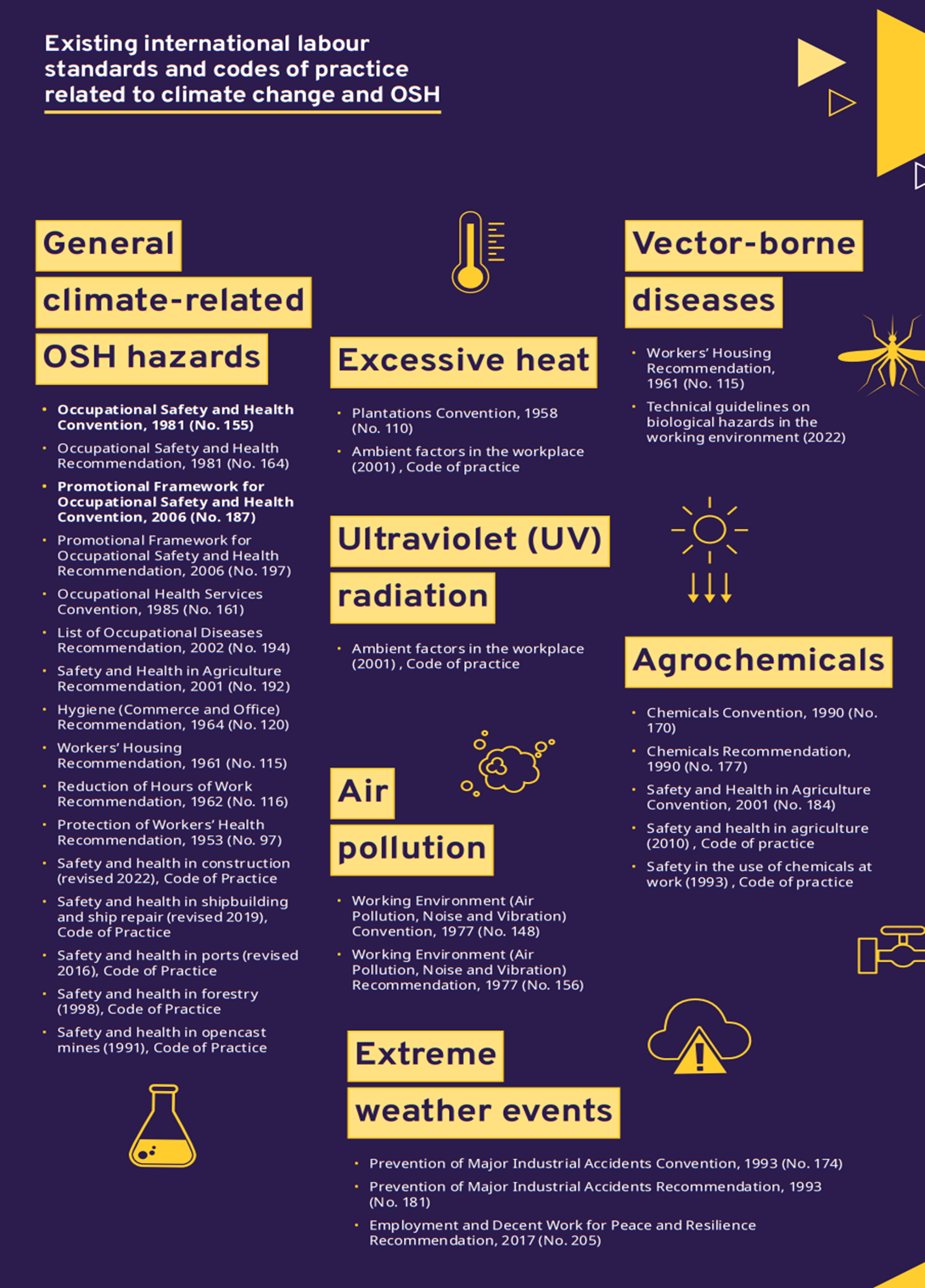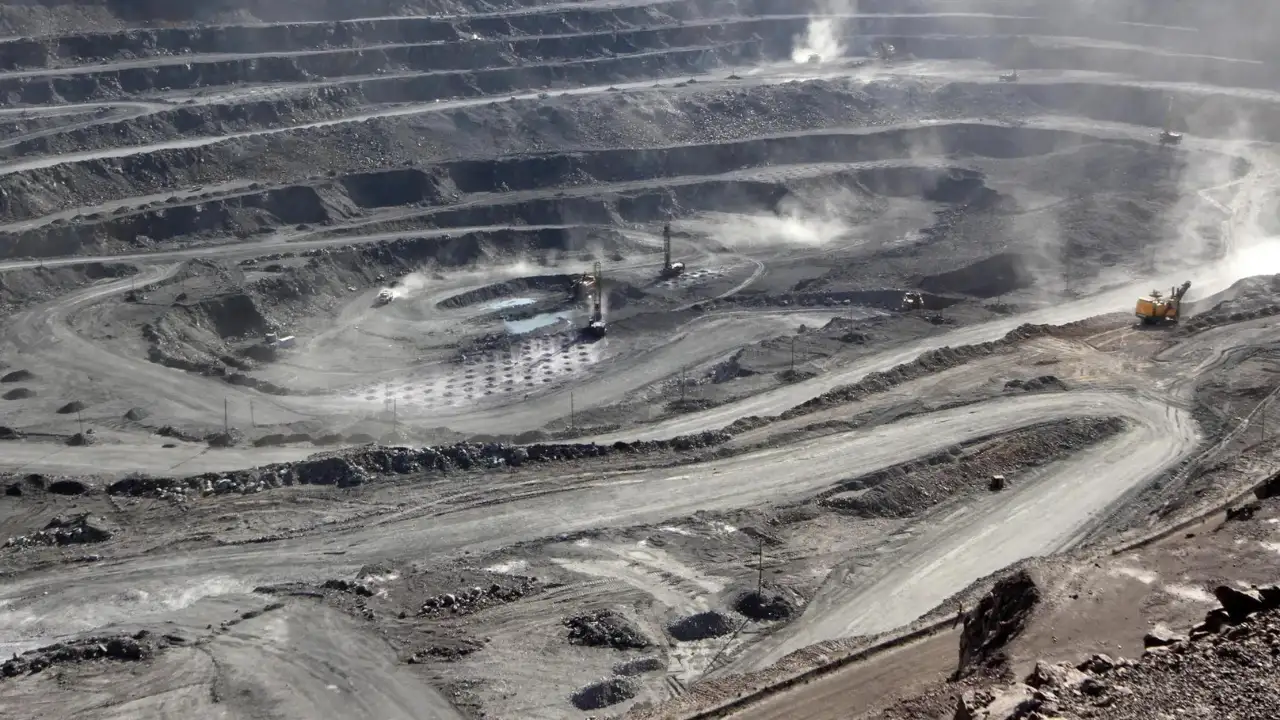- Courses
- GS Full Course 1 Year
- GS Full Course 2 Year
- GS Full Course 3 Year
- GS Full Course Till Selection
- Answer Alpha: Mains 2025 Mentorship
- MEP (Mains Enrichment Programme) Data, Facts
- Essay Target – 150+ Marks
- Online Program
- GS Recorded Course
- Polity
- Geography
- Economy
- Ancient, Medieval and Art & Culture AMAC
- Modern India, Post Independence & World History
- Environment
- Governance
- Science & Technology
- International Relations and Internal Security
- Disaster Management
- Ethics
- NCERT Current Affairs
- Indian Society and Social Issue
- NCERT- Science and Technology
- NCERT - Geography
- NCERT - Ancient History
- NCERT- World History
- NCERT Modern History
- CSAT
- 5 LAYERED ARJUNA Mentorship
- Public Administration Optional
- ABOUT US
- OUR TOPPERS
- TEST SERIES
- FREE STUDY MATERIAL
- VIDEOS
- CONTACT US
Impact of Climate Change on Occupational Safety and Health
Impact of Climate Change on Occupational Safety and Health
Climate change is already having serious impacts on the safety and health of workers in all regions of the world. Workers are among those most exposed to climate change hazards yet frequently have no choice but to continue working, even if conditions are dangerous. Global occupational safety and health (OSH) protections have struggled to keep up with the evolving risks from climate change, resulting in worker mortality and morbidity.
Recent Context
- Recently on 22 April 2024, the report released by the International Labour Organization (ILO), ‘Ensuring safety and health at work in a changing climate’, says that climate change is already having a serious impact on the safety and health of workers in all regions of the world.
Key Highlights of the Report
- The report finds that climate change is significantly affecting occupational safety and health (OSH) worldwide, with workers facing increasing hazards but often having to work in dangerous conditions.
- The ILO estimates that more than 2.4 billion workers (out of a global workforce of 3.4 billion) are likely to be exposed to excessive heat at some point during their work, according to the most recent figures available (2020).
- When calculated as a share of the global workforce, the proportion has increased from 65.5 per cent to 70.9 per cent since 2000.
- In addition, the report estimates that 18,970 lives and 2.09 million disability-adjusted life years are lost annually due to the 22.87 million occupational injuries, which are attributable to excessive heat.
- This is not to mention the 26.2 million people worldwide living with chronic kidney disease linked to workplace heat stress (2020 figures).
- However, the impact of climate change on workers goes well beyond exposure to excessive heat, the report says, creating a “cocktail of hazards”, which result in a range of dangerous health conditions.
- The report notes that numerous health conditions in workers have been linked to climate change, including cancer, cardiovascular disease, respiratory illnesses, kidney dysfunction and mental health conditions. The impact includes:
- 1.6 billion workers exposed to UV radiation, with more than 18,960 work-related deaths annually from nonmelanoma skin cancer.
- 1.6 billion likely to be exposed to workplace air pollution, resulting in up to 860,000 work-related deaths among outdoor workers annually.
- Over 870 million workers in agriculture, likely to be exposed to pesticides, with more than 300,000 deaths attributed to pesticide poisoning annually.
- 15,000 work-related deaths every year due to exposure to parasitic and vector-borne diseases.
What is Occupational Safety and Health (OSH)?
- Occupational safety and health (OSH) or occupational health and safety (OHS) is a multidisciplinary field concerned with the safety, health, and welfare of people at work (i.e., while performing duties required by one's occupation).
- It deals with all aspects of health and safety in the workplace and has a strong focus on primary prevention of hazards. Its goal is to prevent accidents and harm to people from work-related activities.
Occupational Safety and Health (OSH) and India
- The Occupational Safety and Health (OSH) in India is complex. Around 80% of India’s workers are employed in the unorganized sector, and more than 90% in informal jobs.
- Such a huge part of the workforce is not covered by a majority of the labor laws which debar them from benefits like safety standards and minimum wage.
Constitutional Provisions
- Labour is a subject in the Concurrent List where both the Central & State Governments are competent to enact legislation subject to certain matters being reserved for the Centre.
- Entry No. 55 in this list mentions “Regulation of labour and safety in mines and oil fields”.
Directive Principles of State Policy
- Article 39(e) of the Constitution emphasizes the protection of workers' health, irrespective of gender, and ensures that children are not exploited due to their young age.
- It also aims to prevent individuals from being compelled by economic circumstances to engage in occupations that are not suitable for their physical abilities.
- Article 42 mandates that the State shall make provisions for securing just and humane conditions of work and for maternity relief.
- Article 43 outlines the State's responsibility to ensure that all workers, whether in agriculture, industry, or other sectors, receive a wage that allows for a decent standard of living.
- This includes conditions of work that enable a satisfactory quality of life, adequate leisure time, and access to social and cultural opportunities.
Legislative Framework
- The Government of India has enacted four main legislations relating to Occupational Safety and Health (OSH) at workplaces:
- The Factories Act, 1948, covering factories wherein the enforcement of safety at workplace is by the Chief Inspector of Factories in the respective states
- The Mines Act, 1952 and Mines Rules, 1955 for mining industry where the enforcement is by the Directorate General of Mines Safety (DGMS) under Ministry of Labour & Employment , Government of India
- The Dock Workers (Safety, Health and Welfare) Act, 1986 followed by notification of the Dock Workers (Safety, Health and Welfare) Regulations, 1990 dealing with the major ports of India
- The Building & Other Construction Workers (Regulations of Employment and Conditions of Service) Act, 1996, covering construction workers at construction sites wherein the enforcement is by the Directorate General Labour Welfare in the central sphere and by the Labour Commissioners/Factory Inspectorates in the States/UTs.
- OSH Code (Occupational Safety, Health and Working Conditions Code) 2020: National database to be created for the Inter-State Migrant Workers. Instead of 240 days, now if a worker has worked 180 days, he shall be entitled for one-day leave for every 20 days of work done.
Nodal Agency
- The Ministry of Labour & Employment (MoL&E), Government of India and Labour Departments of the State Governments and Union Territories are responsible for Occupational Safety and Health of workers.
|
India has ratified other six fundamental ILO conventions which include:
|
- India has ratified 47 International Labour Organization conventions along with 1 protocol. Currently, 39 conventions are in force.
- The major conventions related to worker’s health include, the Medical Examination of Young Persons (Sea) Convention, 1921, Equality of Treatment (Accident Compensation) Convention, 1925, Protection Against Accidents (Dockers) Convention (Revised), 1932.

|
About International Labour Organization (ILO)
|
Although it is enshrined in the Constitution and the Legislature of India, the traditional concepts of OSH prevailing in the country is a far cry from the objectives of the ILO and international standards for OSH. Being a signatory participant for Convention 187 India has to comply with OSH in near future.



